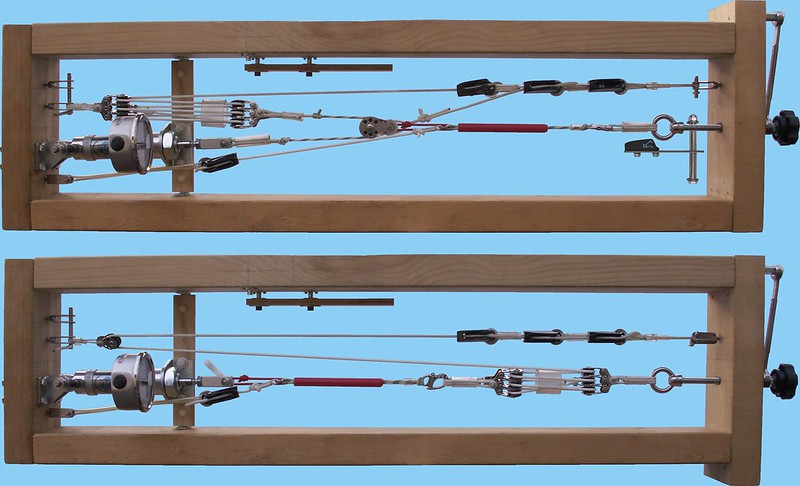This cylinder/gauge combo is the same one I use for my load tester:
http://www.flickr.com/photos/aerotowrelease/8317889807/

and it's a heavy bulky chunk of metal. It's not something you wanna take/send up on a recreational flight. It needs to be a dedicated flight preferably in sled conditions with halfway competent people on both ends.
It needs to come down with the glider which means that - for most accurate results - it needs to be configured at the back end of a release that's feeling the full towline tension.
What I recommend you do - after you've gotten a one point tow or two under your belt - is run a short fixed bridle between your shoulder snap shackles and through the Rod Clevis on the piston of the cylinder (so's it will float and center (as would a tow ring or primary bridle thimble)) which is configured gauge down. (The gauge is heavy and will wanna rotate things upside down if you don't start that way.)
A barrel release is installed on the cylinder's fixed/upwind end.
The barrel release engages the back end of 324 pound (18 stitch) Towline Shear Link which protects the cylinder and gauge which both have 500 PSI pressure / 388 pound tension capacities.
The Shear Link is engaged by the towline carabiner.
If you can get a helmet or downtube camera on the gauge fine - if not, also fine.
It's OK if you look at the gauge for a couple of seconds periodically but don't stare at - as you'll be tempted to. If you do you won't be able to find the tug when you look up again. (Ask me how I know.)
We're only interested in the steady state climb reading. Lows and highs are meaningless - we already know they can go down to zero and up to weak link.
Multiply the PSIs by 0.776 to get pounds of towline tension.
Record the flight with a GPS receiver so we know the climb rate and angle.
Also record temperature, relative humidity, barometric pressure.
For a tandem or a solo glider that doesn't like to be towed one point just pop the thimble out of the two point bridle and Lark's Head it onto the upwind loop of the Towline Shear Link (after popping its thimble - if present). Towline tension will be the PSI reading times 1.35.
Have the tug plan to end the tow at five hundred feet so he eases up on the gas and levels out.
When he waves you off push out to climb then pull in to slacken the line and pull the barrel release.
Do something to secure the cylinder on/in your harness to avoid dragging it on landing.
But if you land into the wind and drag it on the grass a bit the world won't end.
For platform...
http://vimeo.com/10550686
Lose the black box on the trailer.
Use a longer fixed bridle between the snap shackles on your hips and do everything the way you did for one point aero 'cept use a Mason Release in place of the barrel with the lanyard going back to one of your hips and use a thimble in the back end of the Towline Shear Link.
You may need to have the cylinder/gauge assembly rotated right side up to read the gauge and with the high towline angle have less trouble doing it.
If you start approaching weak link - 417.5 on the gauge - then release and we'll configure such that the cylinder only sees half the load.
But I'm guessing the top-out tension on the top end won't be too much higher than what can be measured at the bottom end with the same diameter of line on the drum with the same hydraulic pressure.
